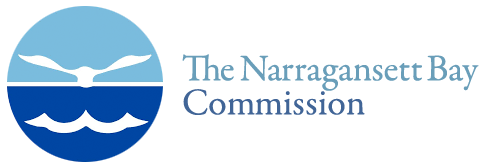Phillipsdale Landing
Overall, water quality at Phillipsdale Landing was fair to good this week. Weather conditions were wet this week, with a total of 1.38 inches recorded at T.F. Green, and the majority of rainfall occurring on the 15th. The Blackstone River flow peaked on the 16th and remained above the 20-year daily median for the entire week. Salinity at the surface averaged 1.8 ppt and ranged from 0.4 ppt to 4.2 ppt. At the bottom, salinity averaged 9.1 ppt and ranged from 0.0 ppt to 32.8 ppt; however, the salinity data for the first part of the week also exhibits some anomalous behavior, and may be tied to a sensor malfunction. Temperatures this week averaged 18.2 °C at the surface and 16.1 °C at the bottom. Surface temperatures ranged from 14.7 °C to 20.6 °C, while bottom temperatures ranged from 11.8 °C to 20.1 °C.
Dissolved oxygen (DO) at Phillipsdale Landing remained above the hypoxia threshold (i.e., DO >2.9 mg/L) throughout the week. Surface DO averaged 9.0 mg/L and ranged from 7.8 -10.4 mg/L. Bottom water DO concentration averaged 7.1 mg/L and ranged from 3.9 mg/L to 9.9 mg/L. Chlorophyll was low, averaging 0.9 ug/L at the surface and 2.7 ug/L at the bottom. Maximum surface chlorophyll readings reached 3.7 ug/L, recorded on the afternoon of May 12th. Please note that tidal fluctuations and Blackstone River flows greatly influence water column salinity, temperature, and DO at this location.
The bottom sonde had a malfunctioning depth sensor this week, thus no depth data is available for the bottom sonde. The salinity data for this week also exhibits some anomalous behavior, and may have been malfunctioning.
Bullock Reach
The Bullock Reach Buoy remains out of the water for the winter. EM will coordinate with RIDEM to redeploy the buoy in late spring-early summer.
